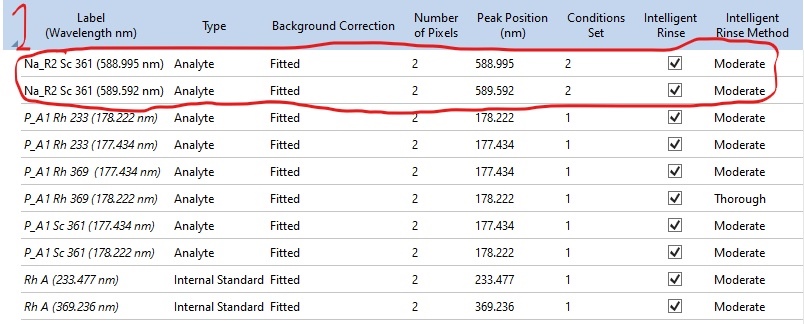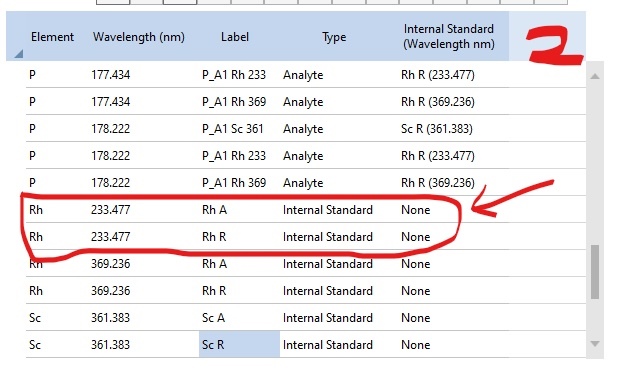I'm developing a method for detecting several elements in a biological fluid but have 2 questions relating to the use of internal standards with the 5100 OES instrument.
1. I have a on-line IS set-up. How long should you have the IS solution running through the introduction system and plasma before starting your analysis? I know for ICP-MS the IS solution is normally run allowed 30 - 60 mins to stabilise in the plasma before beginning the analysis. Is there a similar recommendation for ICP-OES?
2. In ICP-Expert software when you select a IS on the 'Elements' tab and assign that IS to your analyte lines. Then in the 'conditions' tab your assign the measurement conditions to your analyte lines. For me I have 7 analytes with 2 wavelengths for each using both Axial and Radial in the same method. I then have 2 internal standards with 1 wavelength each. My question is is the IS stability plot formed from reading the analyte sample + IS together under the measurement condition you assigned to that analyte? See image 1 below. Or is the IS stability plot formed from the just the internal line by itself that was originally selected? See image 2 below. In the case of scenario 2 being correct, does that mean I should select the same IS line twice each IS i'm using and assign one to read axial and the other radial?


